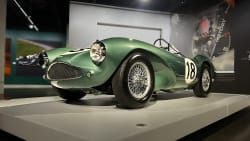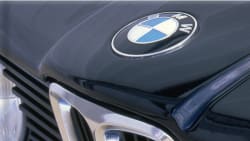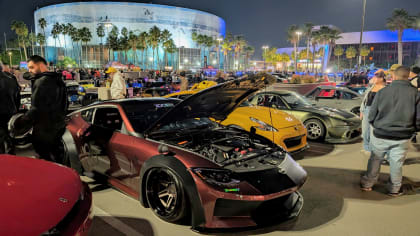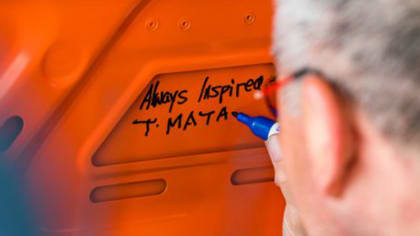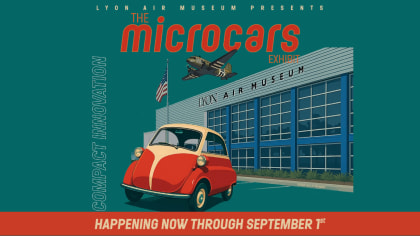THE SHINING

We review MOTHERS new ceramic line of car shine products: California Gold Ceramic Wash and Wax, Ceramic Spray Wax, and Ceramic Paint Protection.
By John Grafman & Zoran Segina
Sun, Nov 2, 2025 12:00 PM PST
Featured image above: Large water drops on a red car (Stockcake public domain photograph).
Why does shiny matter? The question, as it pertains to our cars and trucks, seems like a simple one. After all, we wouldn’t want to walk out of the house in grimy clothes, and most enthusiasts feel the same about a dirty car. There are products, like those produced by Mothers Polish, for the passionate owners that love the interaction and the opportunity to bond with their beloved transport, even when not behind the wheel. Having a beautiful body isn’t enough. Sure, the handwashing process allows one to caress and physically appreciate the form of any automobile. Nevertheless, on a daily basis, most of our interactions are visual.
But there’s more to it, especially when digging deeper into human subconsciousness. And, then there’s the design side of the story. A brightly polished and waxed car allows one to fully appreciate a dynamic design, as the reflections and highlights radiate off the surfaces and edges, allowing one to absorb the full impact of the form. Without a clean and shiny surface, the impression becomes diffused and muted.
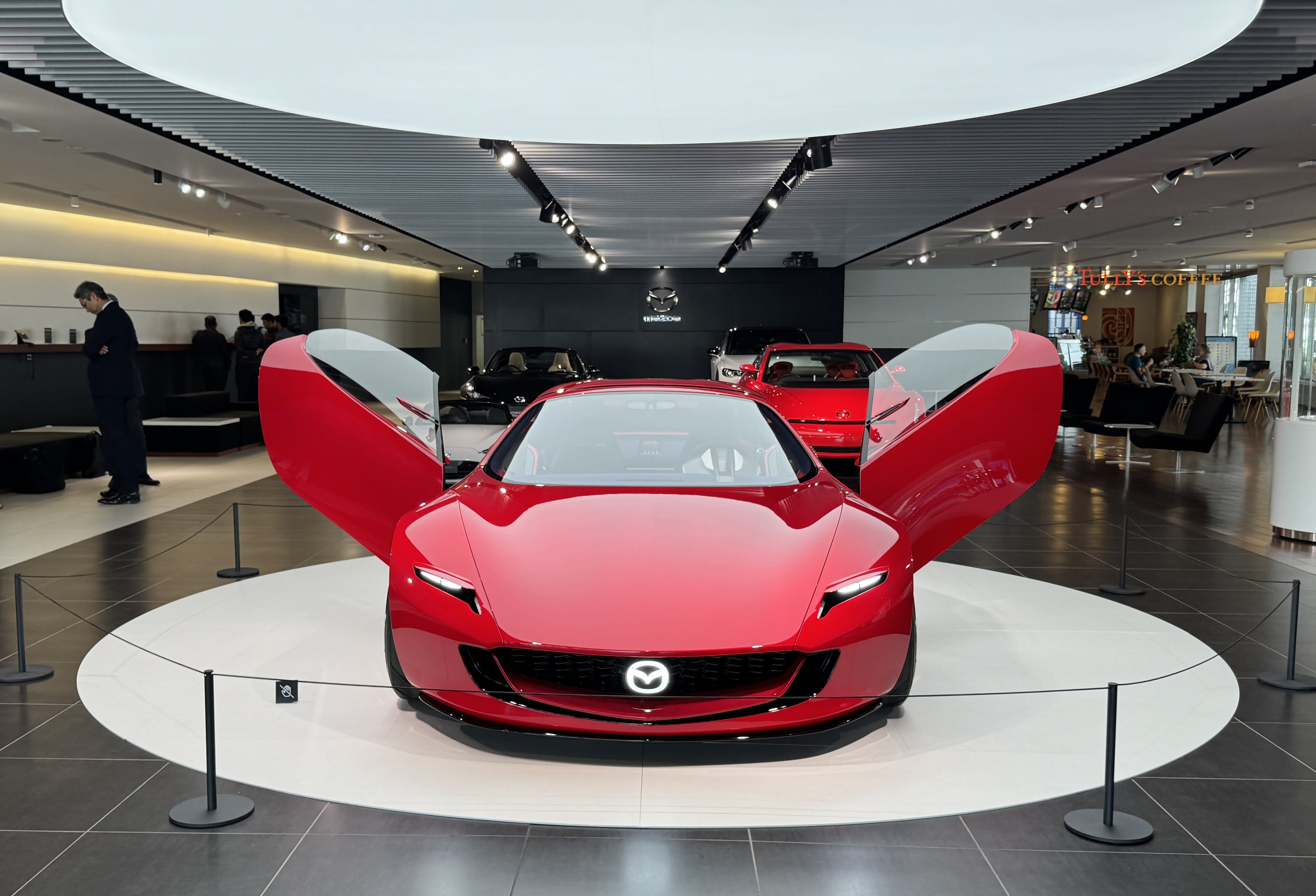
“What a lot of people don’t realize is that when you design a vehicle, so much of the effort that goes into what’s called highlight control,” according to Derek Jenkins, VP of Design at Lucid Motors. Jenkins dives deeper, “Highlight control is how a strip of light, like if you were to walk up to the car with a strip of light, what that reflection of that strip looks like on the car. How does the reflection move across the body, across the doors and into the contours of the fenders? That’s a kind of highlighting process and we use special tools both in the computer, as well as in the clay modeling process to control those reflections.
“And that is also like [when] the untrained eye sees those reflections, and they don’t know why the car looks good. They’re reacting to that – to that highlight control, if you will, that highlight design. That’s a major part of the sculpting and fine tuning and the nuances of automotive design.”
“Being able to notice the delicate shapes comes down to a number of factors.” Jenkins continues, “Inevitably, it comes down to like the shape of the surface of the car and the finish, the level of finish on the car, and the color of the car, and the effect that comes from the color’s makeup, the paint’s makeup – a solid color versus a form of metallic. And then, within metallics there’s a whole spectrum of what we call ‘flop conditions’, where the metallic causes a stronger color contrast in a highlighted area, area with direct sunlight versus a shaded area.
“The flop is the degree in which it goes from brightness to darkness. And that also has an effect on how the human eye perceives the shape of the car.”
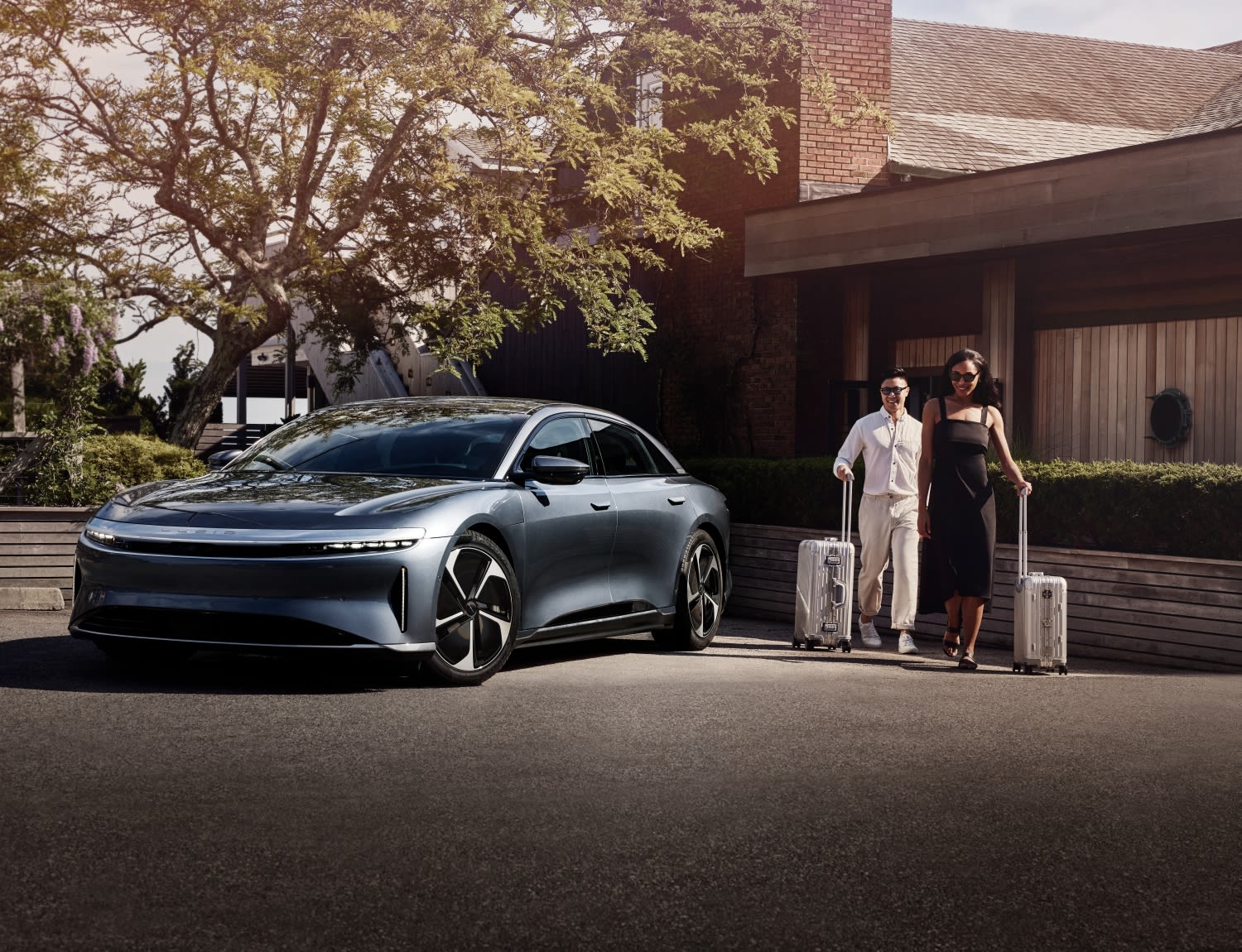
Acting in harmony, the design coupled with a perfect surface can produce extraordinary results. Without both elements, the overall effect is downgraded.
“Perceived Quality – Shine is associated with cleanliness and luxury. A glossy car looks ‘newer’ and more high-end, even if the design itself is simple. It’s fun to wash, and when it’s spotless the surface feels smooth, sleek, and satisfying,” explains Dave Marek, Executive Creative Director of Acura. “That’s the wish: to have the most beautiful, mirror-like finish. We spend a lot of time working the reflections on a clay model. To buyers – they don’t know the work invested, but they know it looks great!”
Marek continues, “You see the reflections on a glossy car and the environment makes the paint look multicolored. Imagine a Black Car with a Yellow car parked next to it…The whole side reflects the yellow. Shiny paint has always been appealing—it feels more expensive, more beautiful.
“Psychological Impact – Humans are naturally drawn to shiny objects. Some studies suggest it connects to how water reflects light. Gloss grabs attention—the reflections create contrast between light and shadow, emphasizing design lines and adding drama.”
Paint finishes are varied and attract diverse tastes. As the saying goes, different strokes for different folks. The current trend towards flat or satin finishes stem from a stealthy appearance to avoid detection by law enforcement. Matte finishes have outlaw appeal. Nowadays, it’s getting almost commonplace, sort of like disco music in the late 70s. Sure, it was cool to be an early adopter of the emerging dance music, but when even your mom is taking lessons to do The Hustle, it starts to lose its appeal rather quickly.
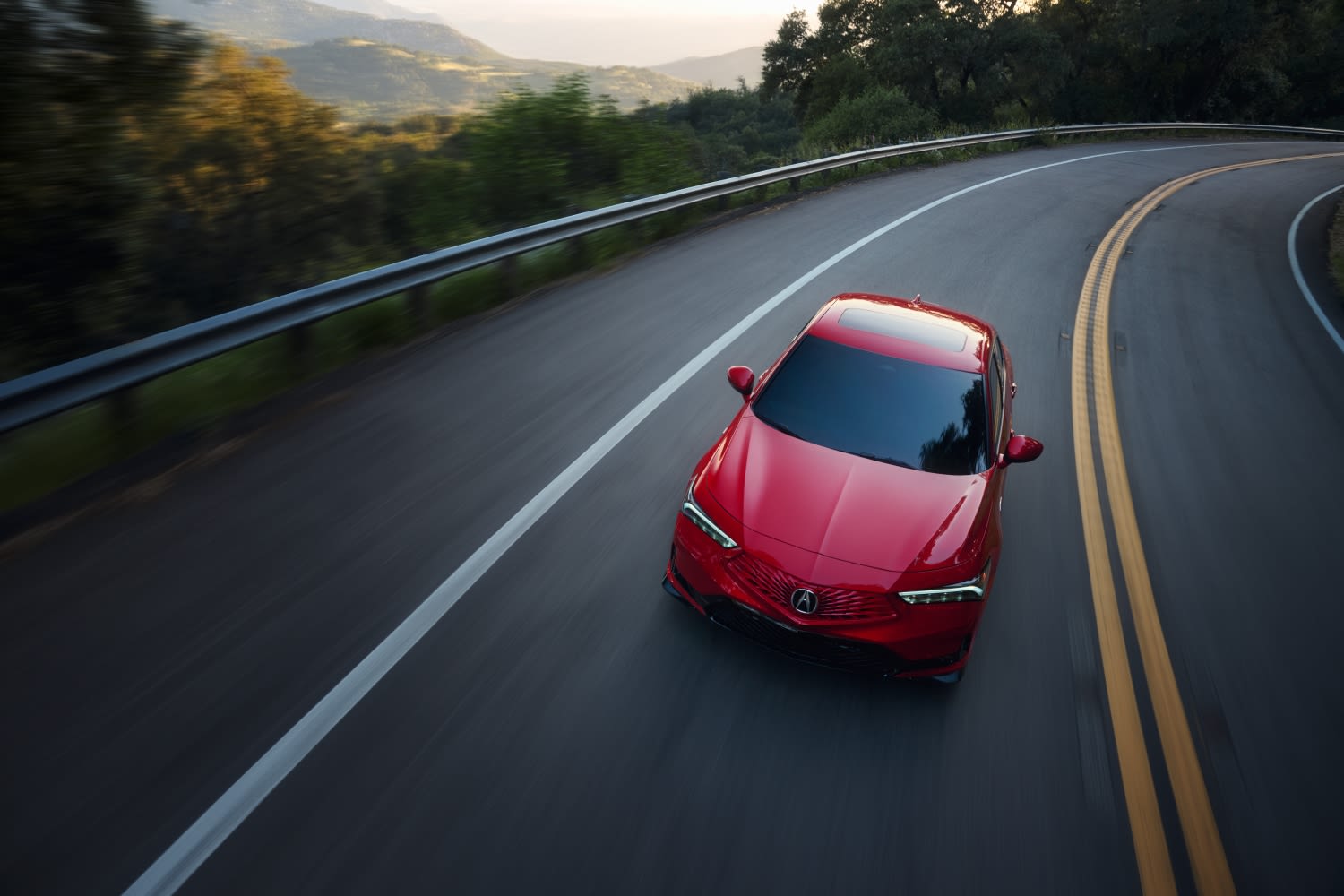
Without a doubt, today’s high-gloss paint technology can be blindingly attractive, and the contrast couldn’t be more obvious as observed by the general public, as well as design professionals.
Mark Stehrenberger, the esteemed Automotive/Product Designer/illustrious Illustrator, tells us, “Form development, reflections and highlights are important parts for a car design to pop. The latest innovations in paints make it even more exciting and can bring a car to life even while standing. Obviously, it takes plenty of refinement and knowledge on the part of the designer, i.e. details can enhance/destroy an otherwise good design.
“Matte-finished vehicles appear only two-dimensional and dead to me; they look cheap and don’t stand out, no matter what brand.”
So then, the obvious question is, how does one extract the best from what the OEMs provide in terms of shine? There are a several approaches. Those in the detail business praise the virtues of a clay bar and a quality polishing product. In a hands-on opportunity using Mothers Polish products, including California Gold Clay Bar, and the Mothers Polish California Gold Ceramic Paint Correction Polish, the results were obvious. This eliminated all the little imperfections that adhere to the paint surface, be it overspray, insect carcasses, tree sap, or whatever that has become one with the paint surface. Followed with the Ceramic Paint Correction Polish, it removed the micro blemishes and minor, fine scratches. Once completed, it leaves a bare, back-to-original (or close to that) finish. That alone would be enough to impress even a Pebble Beach Concours judge, if any happen to be strolling by.
The Paint Correction Polish, due to the abrasives, can be a bit of a challenge to apply as directed. One solution not found on the packaging instructions is to use a moist application pad, like the ones Mothers offers. Saturating the pad first in water and then wringing it out allowed the polishing product to glide smoothly onto the surface of the car with less force. Otherwise, it embeds into the pad and subsequently the applicator sticks to the car surface. Once dry, buffing it off was easier than anticipated.

At that point, protocol dictates a wax job to both protect the now raw surface and to enhance the shine. The California Gold Ceramic Spray Wax is the formulated companion to the Paint Correction Polish. This wax does provide a tough, long-lasting protective coating. While this does the job quickly and properly, it doesn’t necessarily result in a deeper, wet-looking finish that can be found when using other Mothers Polish waxes. So, it’s a trade-off that still yields undeniable benefits.
According to Mothers, the California Gold Ceramic line is ceramic made simple. These products are user-friendly and provide great results on vehicles that have been traditionally waxed, or even if there has been a ceramic coating previously installed. These Mothers California Gold Ceramic products provide more resilient and longer lasting protection and make routine washing quicker and easier, because soil doesn’t stick to ceramic like it can to an unprotected or waxed finish.
As luck would have it, a shower passed overhead after a recent application of the Ceramic Wash & Wax along with the California Gold Ceramic Spray Wax. The results were verifiable proof of the hydrophobic, repelling action. The beaded raindrops that remained on the surface of the car were noticeably small and very uniform, as if this was done by a computer rather than nature. This was an impressive display of how effective these products work.
Derek Jenkins has the last word on this subject, “If the car has any dirt, any oxidation, anything that subdues that reflection, it's just not as brilliant. It's like a dull diamond versus one that's been cut perfectly and highly reflective. They might have exactly the same basic shape, but they just look different!”
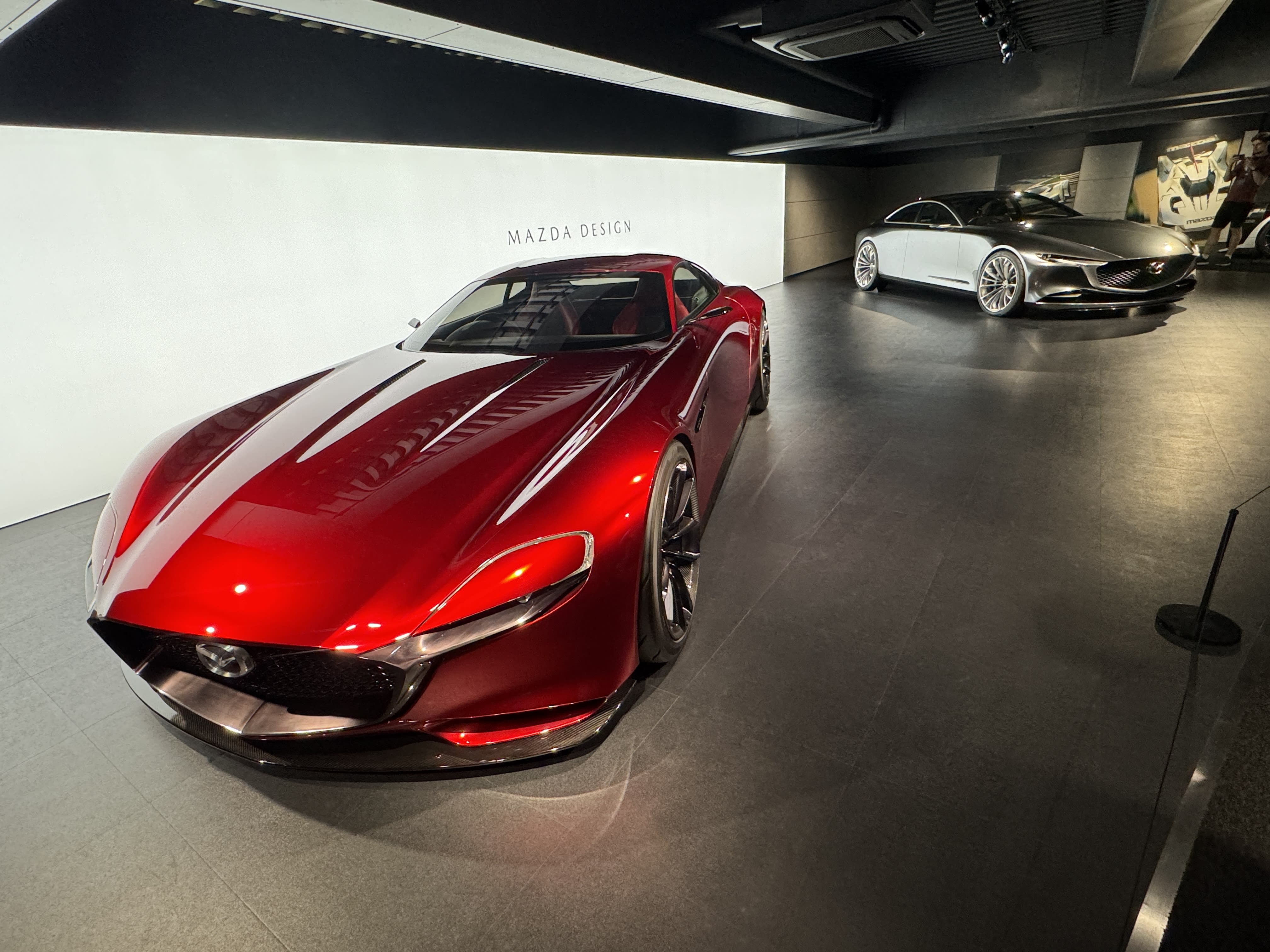
The way we see it is, a little elbow grease goes a long way to not just enhancing the shine but is enables the brilliance of the exterior design to shine on through. – John Grafman
Zoran J. Segina Comments
When it comes to maintaining appearances, youth is a definite advantage. A budding teenager can exhibit her radiant complexion often using only soap and water. A lady in her sixth decade is likely to require significantly more cosmetic assistance to even come close to the same result. When it comes to our metallic lady companions – after all we affectionately refer to them as “she” – the same principle applies. Our cars and trucks serve us for years, toiling in blazing sun, pouring rain, braving Santa Ana winds, wildfire smoke and a smattering of other harsh chemicals. For their faithful service we should at least provide them with a proper automotive makeup as they age.
Our family transportation contains a 25-year-old BMW, and an 11-year-old Mercedes. They are kept outdoors and bear the full brunt of Southern California summers, winters, and consequences of assorted natural disasters. In automotive years (are they like dog years?) our cars are ancient. To keep metal surfaces as shiny and protected as possible, I have been relying on Mothers products for years. My efforts have not gone unnoticed. My next-door neighbor has admired the condition of our cars, while her husband may secretly resent me when faced with the inevitable “why our cars do not look the same as theirs.” Southern Californians resort to all kinds of remedies to keep the dirt and grime away some of them perhaps not recommended by manufacturers. My sailing buddy, for example, cleans her Tesla with a dishwashing liquid.
I was intrigued when Mothers invited me to test its new ceramic line products. Presently it includes a California Gold Ceramic Wash and Wax, Ceramic Spray Wax and Ceramic Paint Protection (which I did not use.) Ceramic components in car care products adhere more strongly to metallic surfaces than Carnauba and other organic component-based waxes creating a longer lasting protection. I was eager to introduce the new product line to my aging ladies.

An inherent risk in any comparison test is a reviewer’s bias. It is easy to develop a preference for a new product simply because it is new. For that reason, I resorted to washing the cars with a Ceramic Wash and Wax followed by hand-polishing the surfaces with Ceramic Spray Wax (using orbital polisher would likely damage old paint especially on the BMW.) I than compared the results with the earlier ones when following the same protocol with Mothers California Gold Carnauba Wash and Wax and Spray Wax. The most noticeable change is the durability of the ceramic protective layer. Surfaces stay cleaner much longer despite assaults from our gardener’s leaf blower, and a swarm of friendly bees in our back yard.
There was an issue when using Ceramic Spray Wax which is not a liquid but has more of a paste-like consistency. After squirting the product out, the covered surface has to be polished immediately. Otherwise, the wax leaves white dots and streaks not immediately noticeable. I wonder if the problem was caused by my failing to apply the wax on a cold surface according to the instructions. Good luck finding a cold surface on an automobile parked outside in the Southern California summer. On both cars I would find faint streaks of polish which I did not notice right away and forgot to buff immediately.
The real problem with beautifying old family cars is not the product but the user. Keeping the aging ladies in pristine condition is hard work, and our two automobiles are not the only family members that are old. To do the job right I need to spray the cars to remove the dust, wash the surfaces with Mothers ceramic shampoo, dry with the shammy, apply the ceramic wax square foot by square foot, and hand-polish immediately. This is hard work, and just like our cars, I have few metal parts inside that protest for days afterwards.
So here is my overall comment after having reviewed the Mothers ceramic line as it pertains to our family transportation: Dear Mothers, the products you sent me are really good and work as advertised. You just forgot to ship some elbow grease. – Zoran J. Segina
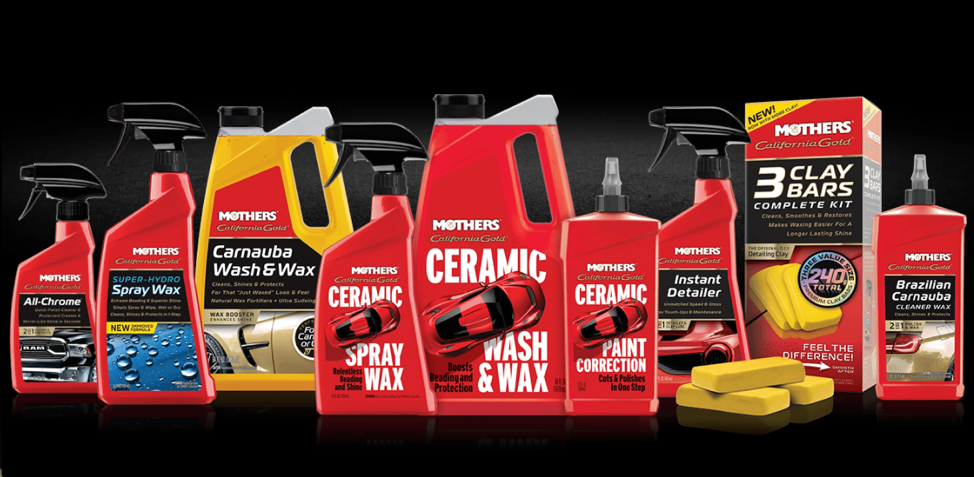
MOTHERS
Polishes, Waxes, Cleaners, Inc.
· California Gold® Ceramic Wash & Wax (#05650) – The ultra-slick, super-sudsy formula is optimized for ceramics and is foam-cannon ready. It produces spot-free, streak-free results, and is pH neutral, eco-friendly, and infused with a refreshing watermelon scent.
· California Gold® Ceramic Paint Correction (#01712) – This breakthrough formula removes scratches, oxidation, water spots, swirls, holograms and other imperfections from your vehicle's paint with ease. You can use it by hand or machine to restore the brilliance to your paint or ceramic coating, while adding gloss and depth.
· California Gold® Ceramic Spray Wax (#05766) – Whether your paint is currently protected by a wax, a sealant, a ceramic coating, or not protected at all, this user-friendly formula provides extreme depth and shine, as it creates a super-hydrophobic coat of ceramic protection.
· California Gold ® Clay Bar – Your car’s finish is exposed to a variety of potentially damaging contaminants. Paint overspray, acid rain, tree sap, airborne metal particles, bird droppings and brake dust all present a danger to the integrity of your paint. Mothers® California Gold®Clay Bar will stop this damage and restore brilliance to your car’s paint, chrome, glass and smooth plastics.
For more information about Mothers products, go to mothers.com.
About The Authors

John Grafman spent far too much of his youth thriving on the canyons that connect the valley to Malibu. This antisocial behavior has evidentially scarred him for life. Nevertheless, using his powers for good rather than evil, John has spent the past dozen or so years working on models for numerous automotive design studios on the west coast. You’ve seen his work on the exterior and interiors of some of your favorite concept and production cars. You can now see his imprint throughout LA CAR.
Together with

Zoran Segina grew up in Eastern Europe, where he owned several Zastava 750s (a variation of the Fiat 600) and participated in local rallies. After a lengthy diet of Yugoslav-manufactured cars, he came to the Mecca of automotive culture – wherein he promptly lost his heart to a tall girl and a short Dart Swinger. He currently commutes around LA in a BMW 633Csi, having made a switch from a Volvo 240 DL with a quarter million miles on the odometer.
